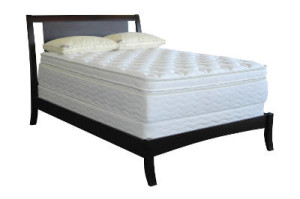 This Probably Never Happened to You, but ….
This Probably Never Happened to You, but ….
Our tenant from #3 had lived with us for several years. Early last week they called to let us know that over the weekend they had awakened with a few welts on their skin, and they believe that they have BED BUGS !
In California, tenants have an absolute right to a “habitable” unit, and owners have an absolute duty to everything possible to maintain their rental units in “habitable” condition. This includes hot-and-cold running water, a working toilet, properly wired electrical service, and that it be free of “vermin” (which would include rodents and bugs that could do harm or carry disease).
OK, that’s the duty. Then there is the question of timing. California Civil Code Section 1942 gives a tenant a right to “repair and deduct” if there is a lack of “habitability” in their residence. Essentially, they can withhold the rent (or portion thereof) and make the repairs. However, before exercising this “right”, the tenant must notify the landlord of the situation, in writing, and then give the landlord 30 days opportunity to make the repairs before withholding and acting. The 30 day period would not apply in extreme situations (like no working toilet), but it is still quite interesting, and offers some direction to landlords …. Fix the problem promptly.
In these circumstances, we have used two solutions.
The best plan involves two steps. Call in a trusted exterminator to eradicate the bed-bugs. Then require that your tenants purchase a mattress cover. A quick search on “Amazon” brought up a “Sleep Tite” mattress cover. It’s a zip-on cover, it covers all 6 sides, and is water-proof (and therefore should prevent bed-bugs from either entering or escaping. It costs about $55 for a queen-sized cover. Washing the bed-sheets regularly in hot-water should eliminate the problem. You might also consider a provision in your lease that requires tenants to have such an impervious, 6-sided mattress cover on each mattress.
An alternate plan that has worked for us is to let the tenant select the exterminator and make their own appointments. We have done this with the agreement that the tenants would be allowed to spend approximately what we would have spent with our own exterminator.
The worst thing to do is to do nothing. And don’t even consider telling your tenants that “it’s their fault”, and that they have to pay for the extermination. This will almost guarantee a visit by your local housing authority (if you’re lucky). If you are not lucky, the next call may come from your tenant’s attorney. And that limitation-of-attorney-fees clause you have in your rental agreement …. Don’t count on that protecting you if the unit is deemed uninhabitable. You could end up refunding rent, paying for the extermination costs, and for the tenant’s attorney AND for your own attorney. Add that up and consider what to do. What I have discussed above has been our approach to the problem, and so far it has worked well for us. Act decisively, and act fast.
Dear Readers: This article is the 160th in a series based on the lessons we have learned the hard way. The contents of these articles are merely opinions of the writer. They are not intended as specific legal advice and should not be relied upon for that purpose. Our practice is in constant refinement as we adjust the way we operate to an ever- changing market. I appreciate your questions, comments, suggestions, and solutions. Contact C. Finley Beven, JD, CPM, CCAM, 99 S. Lake Avenue, Pasadena. (626) 243-4145. FinBeven@msn.com. www.BevenandBrock.com
